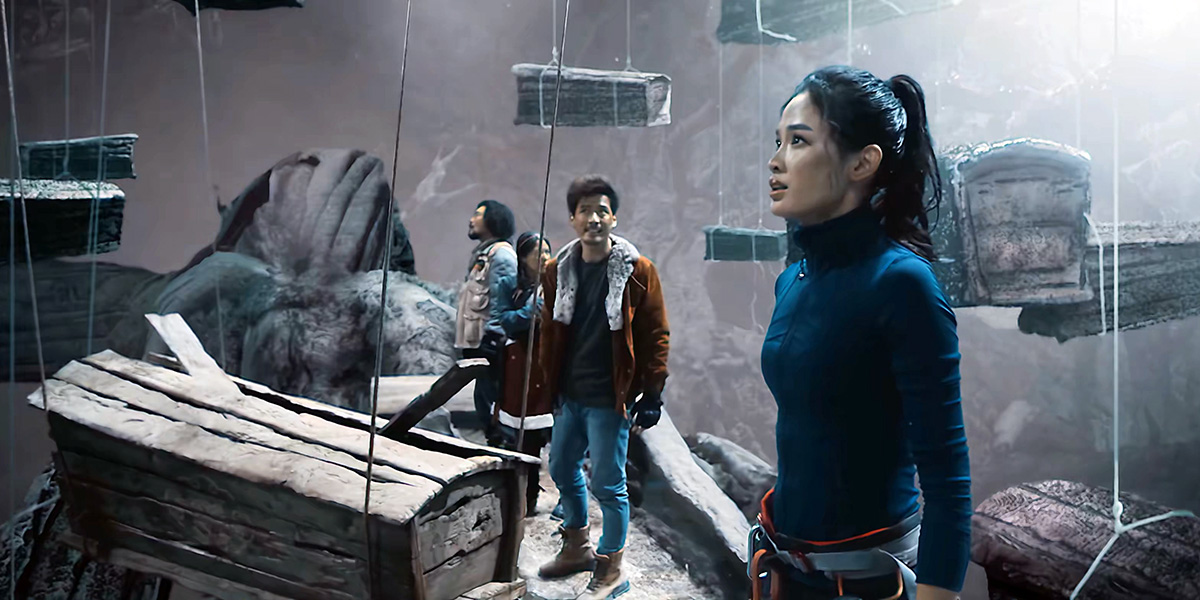Archaeologist and treasure hunter Lin Xi recalls the stories her father used to tell her about the existence of the fabled King Gesar of Tibet. While the community consider this a myth, Lin is sure that King Gesar’s treasure trove can be found, but it can also explain her father’s disappearance. Lin travels to Tibet with her loyal assistant, but finds getting to the target easier said than done; every local driver refuses to travel to such high altitude, leaving the mission in jeopardy. Thankfully a mysterious freelance guide offers his assistance – for a price – and the team is journeying to the most inhospitable parts of Tibet. Yet, on their tail is a tycoon art collector who will stop at nothing to get the treasure.
On seeing this title announced, I immediately thought that this was a fourth part to the franchise that started with ‘Tokyo Raiders’. Given how much returns diminished between the original and the moribund ‘Europe Raiders’, this didn’t exactly fill me with hope. Thankfully, ‘Tibetan Raiders’ isn’t connected to said franchise. Unfortunately, apart from the stunning scenery, that’s probably the best that can be said about it.
The treasure hunting hero or heroine is a familiar part of cinema; when done well, there’s a chance you might get something in the same cosmos as ‘Raiders of the Lost Ark’. Unlikely, given what a wonderful film it is, but you can at least reach out for those dizzy heights. ‘Tibetan Raiders’ is much more akin to a mildly diverting adventure inspired by the genre and backed by Chinese money. The rather important matter of action got somehow forgotten when making this, though and ‘Tibetan Raiders’ is more travelogue than heart-pumping swashbuckler.
The main selling point of ‘Tibetan Raiders’ is the breathtaking Tibetan vistas. In an age where so much is computer generated, there is much to be admired about actual location shooting. While the makers were patting themselves on the back over the look of the film, they decided that any great set-pieces would dilute the view and ensured that none troubled the film. If that was their intention, they are once again to be commended; this is about as uneventful an experience as you could hope for. There is a so-so conclusion, but it hardly makes up for the long journey that pre-empts it. And, most jarring of all, instead of tying up all of the loose ends in the closing minutes, we get an on-screen explanation about what happened to the main villain! Needless to say, that is the perfect summary of the kind of dull ninety minutes the viewer has just sat through.
- Mission Kiss And Kill - December 7, 2025
- Yojimbo - November 24, 2025
- The Five Venoms - November 9, 2025






